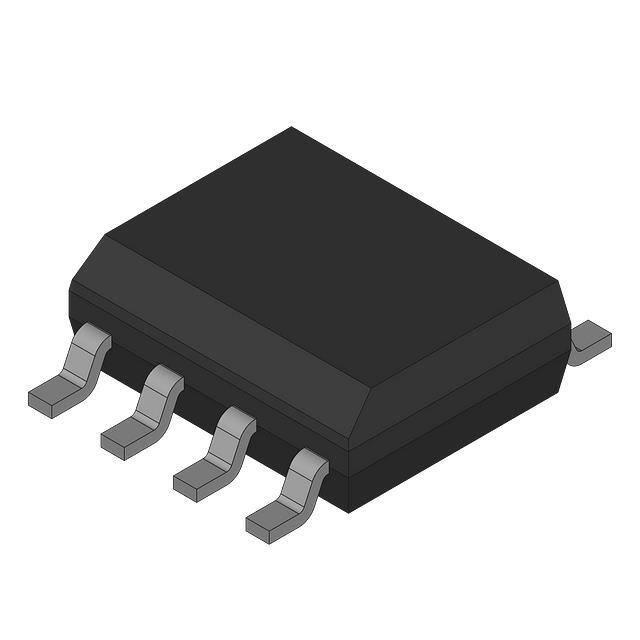What is the slew rate of an operational amplifier
For electronic engineers, operational amplifiers are indispensable devices in analog circuits. They can be used for signal gain adjustment, filter design, and as ADC drivers. Operational amplifiers have various parameters. This article mainly discusses the slew rate parameters of operational amplifiers. Taking the ADA4622-1 commonly used in ADI products as an example, this parameter and its impact on amplifier performance are explained.
Definition of slew rate
Slew rate is an important parameter of an operational amplifier. It reflects the maximum rate of change of the output voltage when a step signal is input to the amplifier, usually expressed in V/μs. Taking ADA4622-1 as an example, the description of slew rate in the data sheet can be seen in Figure 1 below.

Figure 1 Slew rate parameters of ADA4622-1 when powered by 5V
We can also measure the waveform at the output of the operational amplifier to calculate the slew rate. Taking the waveform in Figure 2 as an example, tr is the output signal rise time, tf is the output signal fall time, and by calculating ΔV/tr and ΔV/tf, the slew rate of the amplifier output signal when it rises and falls can be obtained respectively.

Schematic diagram of slew rate calculation
Relationship between slew rate and full power bandwidth
For a signal with a sinusoidal output, the output voltage can be expressed as:
Vout = Vp * sin(2*π *f*t), where Vp is the signal amplitude and f is the signal frequency.
The output voltage is derived with respect to time to obtain:
dv/dt=2πfVpcos(2πft)
( dv/dt )max=2πfVp
The max in the above formula refers to the maximum value of the cosine signal after derivation at t=0, that is, the slew rate of the original sinusoidal signal is the largest at t=0. It can be seen that the slew rate represented by dV/dt is related to the frequency of the signal and the output amplitude of the signal. In the above formula, if Vp is the output peak voltage of the op amp. Then the amplifier slew rate can be expressed as:
Slew Rate=(dv/dt)max=2*π*FPBW*Vp (1)
At this time, FPBW is the full power bandwidth of the op amp, that is, the highest signal frequency that will not cause output signal distortion when the amplifier input is a large signal and the output is at the maximum rate of change.
According to the derivation, in circuit design, if the signal output peak value and the highest signal frequency are known, the minimum slew rate required by the operational amplifier can be calculated using the following formula.
S ≥ 2π fVp
f = highest signal frequency (Hz)
Vp = maximum peak voltage of the signal (V)
For example, for a signal with an output of 2Vp and a maximum frequency of 25kHz, according to the above formula, an operational amplifier with a slew rate of at least 0.314V/μs is required.
Conversely, if the slew rate and output signal peak value of the amplifier are known, the maximum input signal frequency that does not cause output signal distortion can also be calculated:
f≤ Slew rate/2πVp (2)
The influence of slew rate on amplifier circuit performance
Take ADA4622-1 as an example. When the power supply is ±15V, the slew rate is 23V/us. When the output signal amplitude is 2V, according to the formula (2) derived in Section 2, the theoretical full power bandwidth can be calculated to be about 1.8MHz;
First, set the input signal to a large signal with an amplitude of 2V and a frequency of 1.8MHz, and use the following circuit diagram 3 for simulation:

Figure 3 ADA4622-1 slew rate simulation diagram
The measured Vout output waveform is shown in Figure 4 below. It can be seen that the output signal bottom has been distorted;

Figure 4 Signal output waveform at a frequency of 1.8MHz
Further increase the input signal frequency to 2MHz, the output waveform is shown in Figure 5 below. It can be seen that the output signal top and bottom begin to distort;

Figure 5 Signal output waveform at 2MHz
Reducing the input signal frequency to 1.7MHz, it can be seen that the bottom distortion gradually decreases, which is basically consistent with the calculation process;

Figure 6 Output signal waveform at 1.7MHz
From this simulation, it can be seen that when the input signal of the amplifier is a large signal, due to the limitation of the slew rate, when the signal frequency is close to or exceeds the full power bandwidth (large signal bandwidth), it will cause distortion of the output signal.
The above discussion is about the case where the input signal is a large signal. So when the input signal is a small signal, will there be a slew rate limitation problem? Using the test curve in the ADA4622-1 manual, when the input signal is 100mVpp, the output signal rises or falls in about 0.05uS. The slew rate is calculated to be 100mV/0.05uS=2V/us, which is much smaller than the typical value in the manual, so the slew rate is not limited.

Figure 7 ADA4622-1 small signal transient response diagram
In addition to considering the output distortion problem caused by the limited slew rate when the input signal is a large signal, we can also pay attention to the impact on other performance of the amplifier:
Generally, a higher slew rate will have a higher operating current, which will lead to higher power consumption. There are also cases where the slew rate is high and the power consumption is low.
A higher slew rate will generate electromagnetic interference (EMI).
Summary
In summary, we can know how to find and calculate the slew rate of the operational amplifier. It can be found that the slew rate of the operational amplifier can be positive or negative, and the two values are not necessarily equal. Especially when the input signal of the amplifier is a large signal, the output signal distortion problem will be caused due to the limitation of the slew rate. Therefore, in actual engineering design, we must calculate or simulate according to the application situation and leave a certain design margin, select an amplifier with a suitable slew rate, and consider comprehensive power consumption, electromagnetic compatibility design and other factors to achieve the best performance of the circuit.


